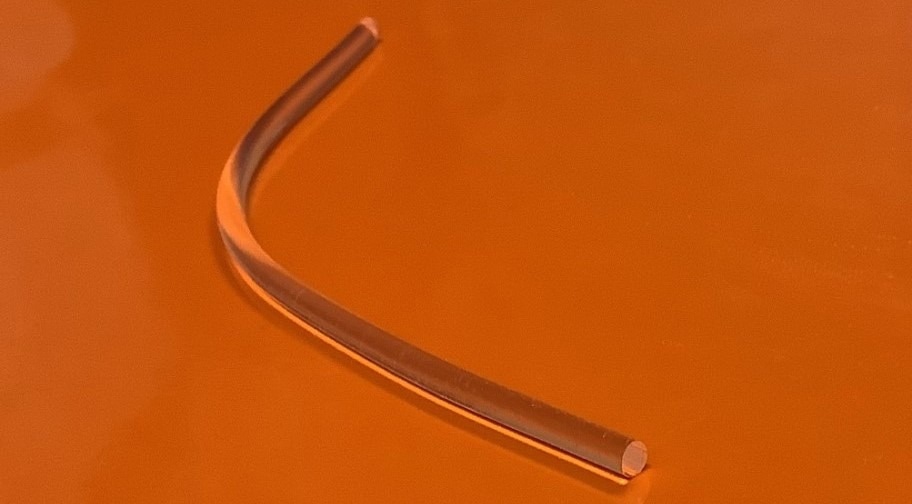Electrical signals play a critical role in governing numerous functions within the human body, including transmitting messages between brain neurons, triggering the heart's muscle contractions, and enabling movement in the hands and feet, among other vital processes.

The material extracted from red algae is transparent, flexible, edible, and renewable. Image Credit: Eric Fujiwara/UNICAMP
To monitor or influence these signals for medical purposes, researchers have recently created a biocompatible and biodegradable optical fiber made from agar, a substance derived from Gracilaria seaweed.
The study was financially supported by FAPESP and led by Eric Fujiwara, a professor at the State University of Campinas’s School of Mechanical Engineering (FEM-UNICAMP) in São Paulo state, Brazil; Cristiano Monteiro de Barros Cordeiro at the Gleb Wataghin Institute of Physics (IFGW-UNICAMP); and Hiromasa Oku at Gunma University in Japan. An article about it is reported in Scientific Reports, a Springer Nature journal.
Biocompatible devices are indispensable when fiber optics is used in medical applications such as monitoring of vitals, phototherapy or optogenetics [a method of controlling and monitoring specific cells by combining optics, genetics, and bioengineering], among others. Optical fibers made of biodegradable materials are also an alternative to existing telecommunications technologies based on glass or plastic fibers,
Eric Fujiwara, Professor, School of Mechanical Engineering, State University of Campinas
A novel optical fiber was produced from agar, a natural gelatin obtained from red algae. It is flexible, transparent, renewable, and edible. The same scientists developed an agar-based biocompatible optical fiber as a sensor to track humidity and chemical concentration.
The production process consists basically of filling cylindrical molds with agar solutions. Our latest research expands the range of applications, proposing a novel type of optical sensor that leverages agar’s electrical conductivity.
Eric Fujiwara, Professor, School of Mechanical Engineering, State University of Campinas
When the optical fiber is stimulated with coherent light, it generates intricate patterns that change in space and over time. As the electrical currents within the medium pass through the fiber, they alter the refractive properties of the agar, causing disruptions in the intricate patterns of light. These disruptions are referred to as speckles.
Fujiwara added, “Analysis of these disturbances enables us to determine the magnitude and direction of the electrical stimuli with reliable measurements for currents equal to or even smaller than 100 microamperes [μA].”
Being able to detect such subtle electrical signals could prove vital for potential biomedical applications.
The fiber could be used in sensor systems to monitor bioelectrical stimuli produced in the brain or muscles, serving as a biodegradable alternative to conventional electrodes. In this case, the optical signals could be decoded to diagnose disturbances. Another possibility would be to use the fiber as an ancillary interface in human-computer connections for assistive or rehabilitation technologies.
Eric Fujiwara, Professor, School of Mechanical Engineering, State University of Campinas
By fine-tuning the chemical composition of the material, the sensor's performance can be improved. Additionally, agar's ability to take on different shapes allows for the creation of lenses and other optical devices sensitive to electrical currents. The most significant advantage is that the fiber can be naturally absorbed by the body after use, eliminating the necessity for additional surgical procedures.
It is important to note that this research is still at the experimental stage, as emphasized by Fujiwara. The practical applications in technology may be some way down the road. However, the rigorous study of the optical response to electrical current serves as a strong foundation for the potential development of future biomedical devices utilizing this fiber.
Journal Reference
Fujiwara, E., et al. (2023) Agar-based optical sensors for electric current measurements. Scientific Reports. doi.org/10.1038/s41598-023-40749-7.